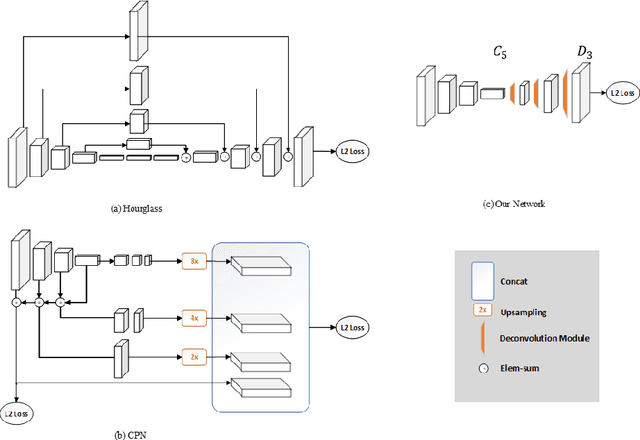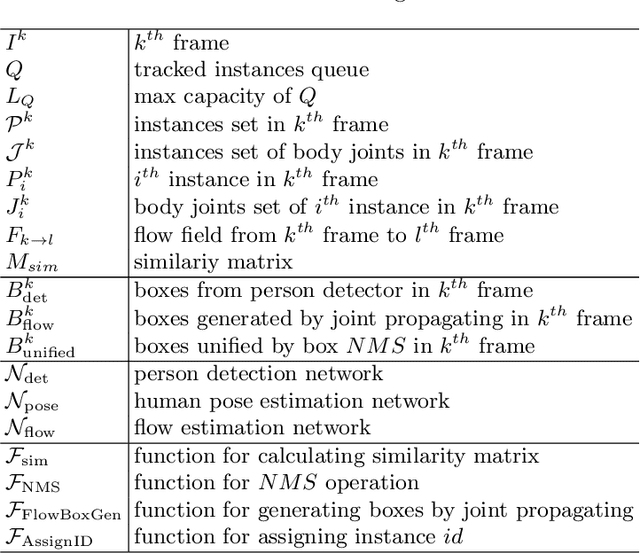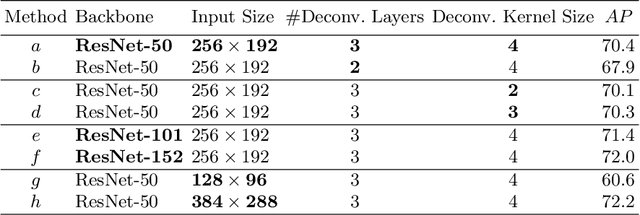Haiping Wu
Florence-VL: Enhancing Vision-Language Models with Generative Vision Encoder and Depth-Breadth Fusion
Dec 05, 2024



Abstract:We present Florence-VL, a new family of multimodal large language models (MLLMs) with enriched visual representations produced by Florence-2, a generative vision foundation model. Unlike the widely used CLIP-style vision transformer trained by contrastive learning, Florence-2 can capture different levels and aspects of visual features, which are more versatile to be adapted to diverse downstream tasks. We propose a novel feature-fusion architecture and an innovative training recipe that effectively integrates Florence-2's visual features into pretrained LLMs, such as Phi 3.5 and LLama 3. In particular, we propose "depth-breath fusion (DBFusion)" to fuse the visual features extracted from different depths and under multiple prompts. Our model training is composed of end-to-end pretraining of the whole model followed by finetuning of the projection layer and the LLM, on a carefully designed recipe of diverse open-source datasets that include high-quality image captions and instruction-tuning pairs. Our quantitative analysis and visualization of Florence-VL's visual features show its advantages over popular vision encoders on vision-language alignment, where the enriched depth and breath play important roles. Florence-VL achieves significant improvements over existing state-of-the-art MLLMs across various multi-modal and vision-centric benchmarks covering general VQA, perception, hallucination, OCR, Chart, knowledge-intensive understanding, etc. To facilitate future research, our models and the complete training recipe are open-sourced. https://github.com/JiuhaiChen/Florence-VL
Florence-2: Advancing a Unified Representation for a Variety of Vision Tasks
Nov 10, 2023Abstract:We introduce Florence-2, a novel vision foundation model with a unified, prompt-based representation for a variety of computer vision and vision-language tasks. While existing large vision models excel in transfer learning, they struggle to perform a diversity of tasks with simple instructions, a capability that implies handling the complexity of various spatial hierarchy and semantic granularity. Florence-2 was designed to take text-prompt as task instructions and generate desirable results in text forms, whether it be captioning, object detection, grounding or segmentation. This multi-task learning setup demands large-scale, high-quality annotated data. To this end, we co-developed FLD-5B that consists of 5.4 billion comprehensive visual annotations on 126 million images, using an iterative strategy of automated image annotation and model refinement. We adopted a sequence-to-sequence structure to train Florence-2 to perform versatile and comprehensive vision tasks. Extensive evaluations on numerous tasks demonstrated Florence-2 to be a strong vision foundation model contender with unprecedented zero-shot and fine-tuning capabilities.
Contrastive Learning of Image Representations with Cross-Video Cycle-Consistency
May 13, 2021



Abstract:Recent works have advanced the performance of self-supervised representation learning by a large margin. The core among these methods is intra-image invariance learning. Two different transformations of one image instance are considered as a positive sample pair, where various tasks are designed to learn invariant representations by comparing the pair. Analogically, for video data, representations of frames from the same video are trained to be closer than frames from other videos, i.e. intra-video invariance. However, cross-video relation has barely been explored for visual representation learning. Unlike intra-video invariance, ground-truth labels of cross-video relation is usually unavailable without human labors. In this paper, we propose a novel contrastive learning method which explores the cross-video relation by using cycle-consistency for general image representation learning. This allows to collect positive sample pairs across different video instances, which we hypothesize will lead to higher-level semantics. We validate our method by transferring our image representation to multiple downstream tasks including visual object tracking, image classification, and action recognition. We show significant improvement over state-of-the-art contrastive learning methods. Project page is available at https://happywu.github.io/cycle_contrast_video.
CvT: Introducing Convolutions to Vision Transformers
Mar 29, 2021



Abstract:We present in this paper a new architecture, named Convolutional vision Transformer (CvT), that improves Vision Transformer (ViT) in performance and efficiency by introducing convolutions into ViT to yield the best of both designs. This is accomplished through two primary modifications: a hierarchy of Transformers containing a new convolutional token embedding, and a convolutional Transformer block leveraging a convolutional projection. These changes introduce desirable properties of convolutional neural networks (CNNs) to the ViT architecture (\ie shift, scale, and distortion invariance) while maintaining the merits of Transformers (\ie dynamic attention, global context, and better generalization). We validate CvT by conducting extensive experiments, showing that this approach achieves state-of-the-art performance over other Vision Transformers and ResNets on ImageNet-1k, with fewer parameters and lower FLOPs. In addition, performance gains are maintained when pretrained on larger datasets (\eg ImageNet-22k) and fine-tuned to downstream tasks. Pre-trained on ImageNet-22k, our CvT-W24 obtains a top-1 accuracy of 87.7\% on the ImageNet-1k val set. Finally, our results show that the positional encoding, a crucial component in existing Vision Transformers, can be safely removed in our model, simplifying the design for higher resolution vision tasks. Code will be released at \url{https://github.com/leoxiaobin/CvT}.
Sequence Level Semantics Aggregation for Video Object Detection
Aug 20, 2019



Abstract:Video objection detection (VID) has been a rising research direction in recent years. A central issue of VID is the appearance degradation of video frames caused by fast motion. This problem is essentially ill-posed for a single frame. Therefore, aggregating features from other frames becomes a natural choice. Existing methods rely heavily on optical flow or recurrent neural networks for feature aggregation. However, these methods emphasize more on the temporally nearby frames. In this work, we argue that aggregating features in the full-sequence level will lead to more discriminative and robust features for video object detection. To achieve this goal, we devise a novel Sequence Level Semantics Aggregation (SELSA) module. We further demonstrate the close relationship between the proposed method and the classic spectral clustering method, providing a novel view for understanding the VID problem. We test the proposed method on the ImageNet VID and the EPIC KITCHENS dataset and achieve new state-of-the-art results. Our method does not need complicated postprocessing methods such as Seq-NMS or Tubelet rescoring, which keeps the pipeline simple and clean.
Simple Baselines for Human Pose Estimation and Tracking
Aug 21, 2018



Abstract:There has been significant progress on pose estimation and increasing interests on pose tracking in recent years. At the same time, the overall algorithm and system complexity increases as well, making the algorithm analysis and comparison more difficult. This work provides simple and effective baseline methods. They are helpful for inspiring and evaluating new ideas for the field. State-of-the-art results are achieved on challenging benchmarks. The code will be available at https://github.com/leoxiaobin/pose.pytorch.
 Add to Chrome
Add to Chrome Add to Firefox
Add to Firefox Add to Edge
Add to Edge